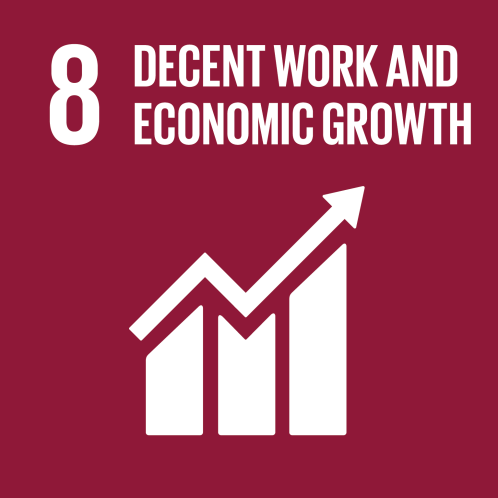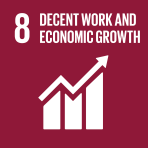GRI Living Wage 2023
Living
Wage
42.7% of our key production partners’ employees earn at least a living wage
Our goal to achieve living wage by 2030, touches upon 2 out of 8 Sustainable Packaging Criteria

By 2030, 100% of our key production partners’ employees earn at least a living wage.
Goal
A first basic risk assessment performed in 2022 showed that six key production partners are based in countries and/or industries where the minimum wage does not equal a living wage, and ‘wages’ and ‘working hours’ are salient issues according to the Sedex Inherent Risk Score. These risk production partners are not SA8000 certified and employed 60% of total potentially impacted employees. Meaning, in 2022, 40% of our key production partners’ employees most likely earned at least a living wage.
Baseline
Royal LC Packaging aims to enable all our Tier 1 key production partners to (continue to) pay their employees at least a living wage by 2030. In 2023, these production partners together represented 84.9% of our total procurement spend and employed 20,979 employees and contractors.
Scope
In 2023, 42.7% of key production partners’ employees earn a least a living wage, compared to 40% in 2022.
Progress on goal




*Employees working either for an SA8000-certified production partner, or for a production partner for which a living wage gap analysis has been performed
**Employees working for production partners, for which a living wage gap analysis has been performed
*** Employees working for production partners based in low risk locations and/or industries
**** Employees working for production partners based in high risk locations and/or industries
42.7% earn at least a living wage*
2.2% earn less than a living wage**
7.2% are likely to earn at least a living wage***
47.8% are at risk of not earning a living wage****
In 2023, 100% of Royal LC Packaging’s key production partners committed to pay at least a living wage by 2030. Based on the data available during the publication of this report, we can state that of the 20,979 employees employed by our key production partners:
Based on annually performed risk assessment and living wage gap analysis reports, 41% of key production partners are not paying a living
wage or are at risk of not paying a living wage, together employing 10,493 employees. 59% of partners (most likely) pay their employees at least a living wage. 86% of the risk key production partners joined Royal LC Packaging’s Living Wage Programme in 2023.
Assuming the employees who (potentially) do not earn a living wage have a partner and an average of two children, there are 41,972 people whose livelihoods could potentially be negatively impacted by these wages. Employees who do not earn a living wage can’t meet the basic needs of their families, creating the risk that their children (20,986) have to quit school to contribute to the household income.
Explanation

Actions
In 2023, we educated our key production partners on the topic of living wages and ensured commitment towards achieving living wages by no later than 2030. Furthermore, supported by IDH – Sustainable Trade Initiative, Royal LC Packaging has launched its Living Wage Programme, which has led to the first living wage gap analyses and constructive dialogues towards closing the living wage gap.
01
01
Policies, codes, and commitments
02
Awareness and
implementation
03
Research and
development
04
Data and
reporting
Policies, codes, and commitments
We have joined the United Nations Global Compact Forward Faster Programme and have committed to establish joint action plans with contractors, supply chain partners and other stakeholders to work towards achieving living wages with measurable and time-bound milestones.
For our additional production partners, the Code of Conduct for Production Partners has been updated and distributed. Included is a commitment to pay at least a living wage by 2030.
Our updated Human Rights Policy and Sustainable Supply Chain Policy were communicated and implemented.
All our key production partners have signed the dedicated Code of Conduct for Key Production Partners. This code includes a binding commitment to pay at least a living wage by 2030.

Next steps
As looking forward is even more important than looking back, below is a brief overview of actions we are planning to take next.


Continue the dialogue with key production partners and – as part of our living wage programme – support them in calculating the living wage gap and to achieve and maintain living wages.

Include the remaining risk production partners in the living wage programme and ensure an action plan towards 2030.

Further improve data quality and availability, leading to more reliable data for living wage reporting, steering and decision making.

Join programmes and initiatives, such as the UN Global Compact Forward Faster Programme and networks of peers in living wage ambition to share best practices and promote the necessity of living wages.



For more detailed information on social topics related to our workforce and our value chain, including health and safety, talent and development, human rights, business ethics, and information security, please refer to our 2023 Social Report.
2023 Social Report
2023 Social Report
GRI Living Wage 2023

Living
Wage
Our goal to achieve living wage by 2030, touches upon 2 out of 8 Sustainable Packaging Criteria

A first basic risk assessment performed in 2022 showed that six key production partners are based in countries and/or industries where the minimum wage does not equal a living wage, and ‘wages’ and ‘working hours’ are salient issues according to the Sedex Inherent Risk Score. These risk production partners are not SA8000 certified and employed 60% of total potentially impacted employees. Meaning, in 2022, 40% of our key production partners’ employees most likely earned at least a living wage.
Baseline
42.7% of our key production partners’ employees earn at least a living wage
By 2030, 100% of our key production partners’ employees earn at least a living wage.
Goal
Royal LC Packaging aims to enable all our Tier 1 key production partners to (continue to) pay their employees at least a living wage by 2030. In 2023, these production partners together represented 84.9% of our total procurement spend and employed 20,979 employees and contractors.
Scope
In 2023, 42.7% of key production partners’ employees earn a least a living wage, compared to 40% in 2022.
Progress on goal

Explanation
In 2023, 100% of Royal LC Packaging’s key production partners committed to pay at least a living wage by 2030. Based on the data available during the publication of this report, we can state that of the 20,979 employees employed by our key production partners:
42.7% earn at least a living wage*
2.2% earn less than a living wage**
7.2% are likely to earn at least a living wage***
47.8% are at risk of not earning a living wage****
Based on annually performed risk assessment and living wage gap analysis reports, 41% of key production partners are not paying a living
*Employees working either for an SA8000-certified production partner, or for a production partner for which a living wage gap analysis has been performed
**Employees working for production partners, for which a living wage gap analysis has been performed
*** Employees working for production partners based in low risk locations and/or industries
**** Employees working for production partners based in high risk locations and/or industries
wage or are at risk of not paying a living wage, together employing 10,493 employees. 59% of partners (most likely) pay their employees at least a living wage. 86% of the risk key production partners joined Royal LC Packaging’s Living Wage Programme in 2023.
Assuming the employees who (potentially) do not earn a living wage have a partner and an average of two children, there are 41,972 people whose livelihoods could potentially be negatively impacted by these wages. Employees who do not earn a living wage can’t meet the basic needs of their families, creating the risk that their children (20,986) have to quit school to contribute to the household income.
Actions
In 2023, we educated our key production partners on the topic of living wages and ensured commitment towards achieving living wages by no later than 2030. Furthermore, supported by IDH – Sustainable Trade Initiative, Royal LC Packaging has launched its Living Wage Programme, which has led to the first living wage gap analyses and constructive dialogues towards closing the living wage gap.
01
02
03
04
Policies, codes,
and commitments
Our updated Human Rights Policy and Sustainable Supply Chain Policy were communicated and implemented.
For our additional production partners, the Code of Conduct for Production Partners has been updated and distributed. Included is a commitment to pay at least a living wage by 2030.
We have joined the United Nations Global Compact Forward Faster Programme and have committed to establish joint action plans with contractors, supply chain partners and other stakeholders to work towards achieving living wages with measurable and time-bound milestones.
All our key production partners have signed the dedicated Code of Conduct for Key Production Partners. This code includes a binding commitment to pay at least a living wage by 2030.
Awareness
and implementation
Our Living Wage Programme for our key production partners was introduced in August 2023. The programme, supported by IDH – Sustainable Trade Initiative, consists of five steps designed to help partners to achieve and maintain a living wage by at least 2030.
A mandatory online training course on our living wage commitment is available for all employees. On 31 December 2023, the course had a completion rate of 77.4%.
Following the workshops organised for employees in 2022, all new hires participate in a dedicated workshop on Royal LC Packaging’s 2030 Ambition, including our living wage commitment.
Customers have been educated on the topic of living wages using a living wage case, comparing the price of an average product produced by employees receiving a minimum wage to that same product if it were produced by employees receiving a living wage.
Goals and KPIs have been implemented throughout relevant parts of the organisation, to ensure living wages are paid and our stakeholders are educated on the topic.
Research
and development
To define the scope, an annual risk assessment was performed to identify key production partners that are at risk of not paying a living wage.
In-depth research has been conducted in collaboration with Sedex, to gain knowledge on relevant living wage benchmarks, initiatives, regulatory developments and implementation challenges and solutions in areas where key production partners are based.
Data
and reporting
The IDH Salary Matrix is used to calculate the living wage gap for our key production partners. This tool enables us to more accurately report on progress.
We have appointed and trained an in-house Salary Matrix key user to support and advise production partners with filling out the tool and check the results.
Our due diligence process was updated and implemented to collect additional data to be able to conduct a more in-depth risk assessment in our value chain.

Next steps
As looking forward is even more important than looking back, below is a brief overview of actions we are planning to take next.

Continue the dialogue with key production partners and – as part of our living wage programme – support them in calculating the living wage gap and to achieve and maintain living wages.

Include the remaining risk production partners in the living wage programme and ensure an action plan towards 2030.

Further improve data quality and availability, leading to more reliable data for living wage reporting, steering and decision making.

Join programmes and initiatives, such as the UN Global Compact Forward Faster Programme and networks of peers in living wage ambition to share best practices and promote the necessity of living wages.
For more detailed information on social topics related to our workforce and our value chain, including health and safety, talent and development, human rights, business ethics, and information security, please refer to our 2023 Social Report.
2023 Social Report
2023 Social Report


